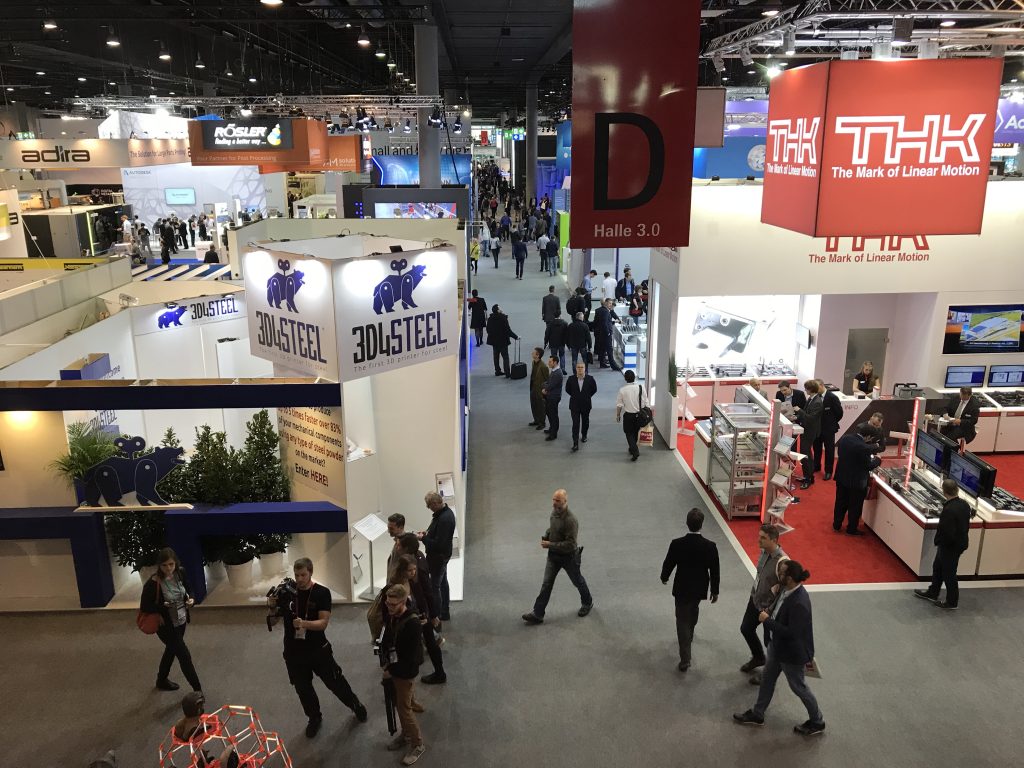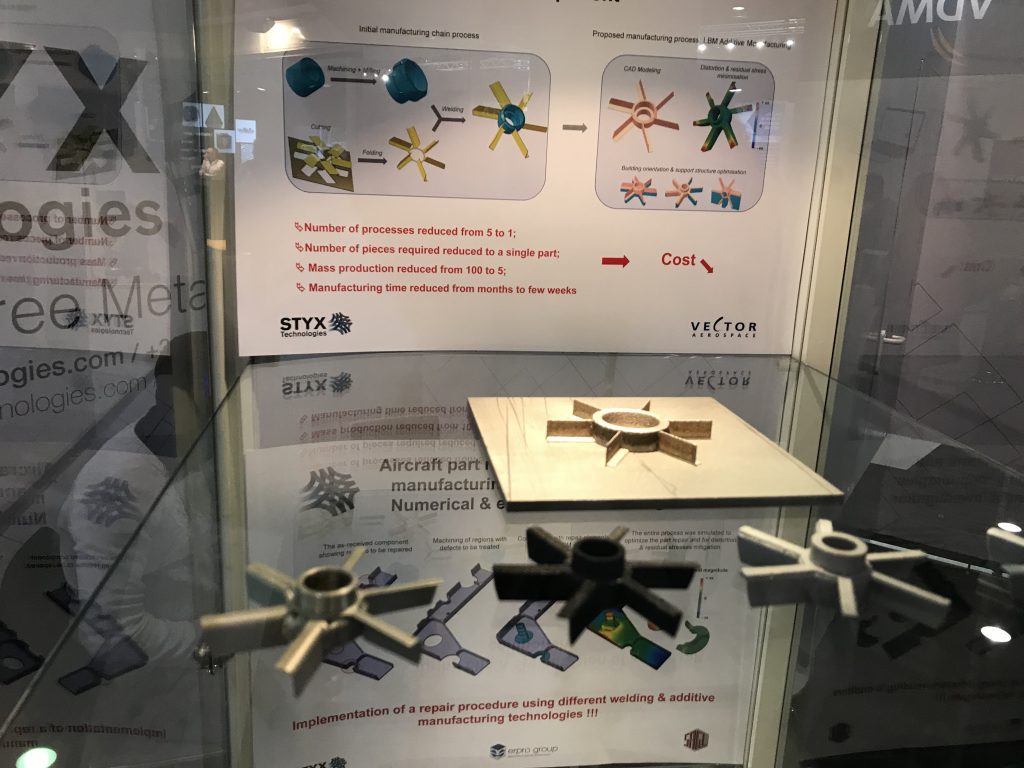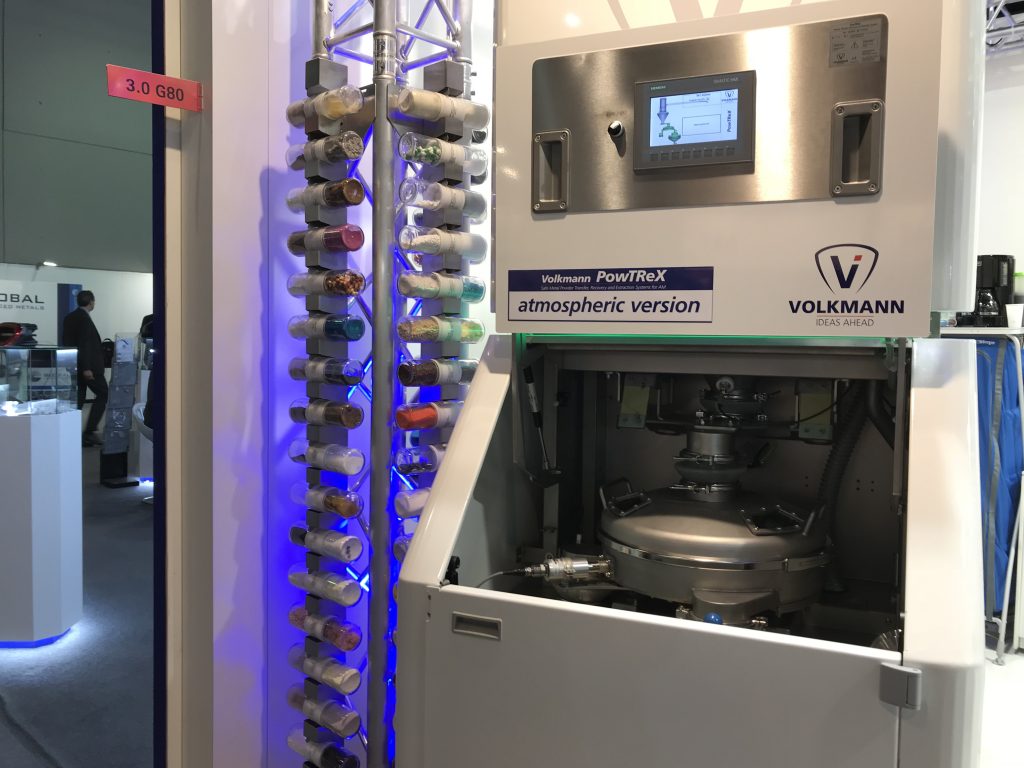At Formnext 2018 there has been a notable decline in the number of “glamorous” 3D printer and product releases at the show – fewer falling curtains, and process debuts, however, more focus on the peripherals.
Of all the exhibitors I have spoken to, digitization, process monitoring, product lifecycle management, automation and additive manufacturing for production are the driving forces for innovation. In other words: the technology works, and now it’s time to show how reliable it can be; how to scale it up to run alongside existing manufacturing technologies; and how to easily integrate it into a factory setting.
Comments concerning the general atmosphere of this year’s show have included remarks about how “professional” it seems, which for some is a sure sign of market maturity.

Software engineering as a service
STYX Technologies is a simulation consultancy specialist based in Paris, France. Though it has been offering its services for three years now, 2018 is the first time STYX has exhibited at the show.
“Our goal,” STYX Business Developer Arnaud Chapé explains, “is to reduce distortions an residual stresses” of metal additive manufactured parts. With expertise across many existing simulation platforms, like Simufact and the award-winning Autodesk Netfabb, Chapé says the company not only helps customers understand the outcomes of additive processes, saving time and money, but it also can help these customers choose the right technology for their application.
In the early days of additive, the STYX service simply couldn’t have existed. But the fact that such businesses can enjoy commercial success, with partners including Erpro Group (Carbon’s first French partner), is clear evidence of customer demand.

Automated powder handling
Generally, at trade shows we are starting to see more exhibitors that provide, for example, the gases for creating inert atmospheres, or automated powder handling systems. Pneumatic and vacuum conveying specialist Volkmann is exhibiting has its ever-fascinating bulk materials handling system on display, with pipelines all along one side of the booth feeding down into a hopper at a rate of up to 10 t/h. For additive manufacturing powders, this feed rate is typically up to 500 kg per hour, dependent of course, on the flow of the material.
This is only Volkmann’s second year at Formnext, though many big players in the industry already rely on its equipment for transporting bulk materials in and out of their machines. Looking around the hall Nick Hayes, President of Volkmann Inc. based in Philadelphia, points out at least 5 customers, all big players in the industry. Having been with the company for over 10 years now, Hayes’ perspective on the industry is refreshing. “It’s not often that a whole new market segment opens up,” he says. One of the most pivotal points too, he points out, will be when these customers really start scaling up the powder bed in these machines, “They don’t understand what will happen when the volume goes up [yet].”

Though a concentrated, and still relatively small part of industry events like Formnext, effective and reliable peripheral supplies are certainly in demand from industry OEM’s. Referring to the NextGen AM Project and its automated and digitally connected solutions Nikolai Zaepernik, Senior Vice President Central Europe at EOS, explained, “Yes, ideally we would have partners for this but today no one is doing that, so we have to help ourselves.”
For all of the latest 3D printing news and releases from Formnext and beyond, subscribe to the 3D Printing Industry newsletter, like us on Facebook and follow us on Twitter.
Featured image shows motorbike with parts simulated by STYX Technologies and made by Erpro Group.



